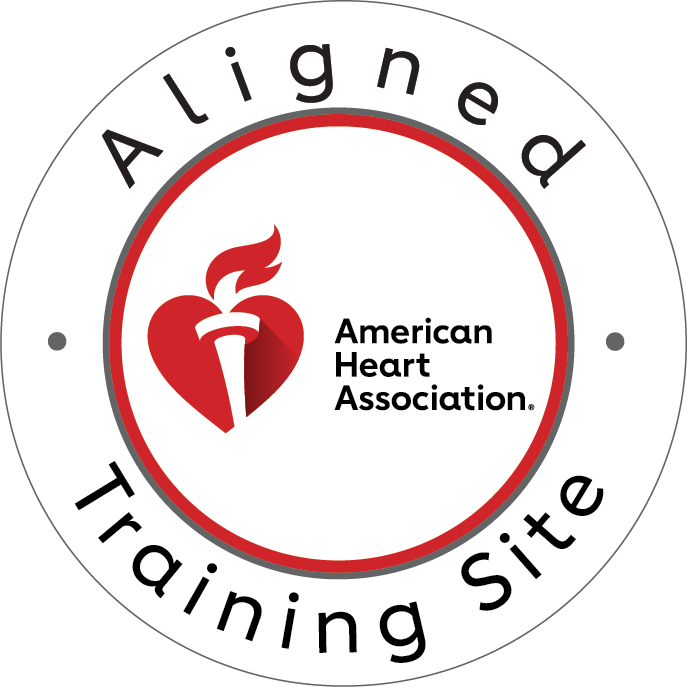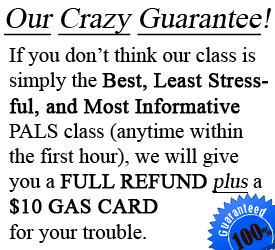Recognizing Life-Threatening Signs: When to Start CPR Immediately
Every second counts during a cardiac emergency. Understanding when to start CPR immediately can mean the difference between life and death for someone experiencing sudden cardiac arrest. Recognizing these critical symptoms enables you to act swiftly and potentially save a life.
Cardiac arrest strikes without warning, affecting over 350,000 Americans annually outside of hospitals. However, immediate CPR can double or triple survival chances. Therefore, knowing the key symptoms that indicate when to start CPR immediately becomes essential knowledge for everyone.
Primary Symptoms That Require Immediate CPR
Unresponsiveness and Loss of Consciousness
The most obvious sign indicating when to start CPR immediately is complete unresponsiveness. When someone suddenly collapses and fails to respond to verbal commands or physical stimulation, cardiac arrest may have occurred. Furthermore, the person will show no signs of normal consciousness or awareness of their surroundings.
Check responsiveness by tapping the person’s shoulders firmly while shouting, “Are you okay?” If there’s no response whatsoever, this represents a critical symptom requiring immediate action.
Absence of Normal Breathing
Another crucial indicator of when to start CPR immediately involves abnormal or absent breathing patterns. Normal breathing should be regular, effortless, and visible. During cardiac arrest, breathing either stops completely or becomes extremely irregular and ineffective.
Look for chest movement for no more than 10 seconds. Additionally, listen for breath sounds and feel for air movement. Gasping, gurgling, or agonal breathing (irregular, gasping breaths) are not normal breathing and indicate when to start CPR immediately.
No Detectable Pulse
While checking for a pulse isn’t always recommended for untrained individuals, healthcare providers should assess circulation. The absence of a pulse in major arteries (carotid or femoral) confirms cardiac arrest and signals when to start CPR immediately.
However, pulse checks should never delay CPR initiation. If you’re unsure about pulse presence, begin CPR immediately rather than waste precious time searching for a weak pulse.
Secondary Warning Signs Before Cardiac Arrest
Chest Pain and Discomfort
Severe chest pain often precedes cardiac arrest, particularly in heart attack situations. This pain may feel like crushing pressure, squeezing, or burning sensations. Understanding these warning signs helps identify when to start CPR immediately if the person suddenly becomes unresponsive.
The pain might radiate to the arms, neck, jaw, or back. Women may experience more subtle symptoms like nausea, shortness of breath, or unusual fatigue. Consequently, monitoring these symptoms becomes crucial for early intervention.
Severe Shortness of Breath
Difficulty breathing or extreme shortness of breath can indicate impending cardiac arrest. When someone struggles to breathe or speaks in gasps, their cardiovascular system may be failing. If this progresses to unconsciousness with abnormal breathing, you’ll know when to start CPR immediately.
Watch for signs like inability to speak in full sentences, using accessory muscles to breathe, or assuming tripod positioning (leaning forward with hands on knees).
Sudden Weakness or Dizziness
Rapid onset of weakness, dizziness, or lightheadedness may signal cardiovascular compromise. While these symptoms alone don’t indicate when to start CPR immediately, they often precede cardiac arrest. Therefore, close monitoring becomes essential.
If someone experiencing these symptoms suddenly collapses and becomes unresponsive, transition immediately to CPR protocols.
Age-Specific Considerations for When to Start CPR Immediately
Infant and Child Symptoms
Recognizing when to start CPR immediately in pediatric patients requires understanding age-specific presentations. Infants and children may not display classic adult symptoms before cardiac arrest.
Key pediatric indicators include:
- Sudden collapse during play or activity
- Choking that progresses to unconsciousness
- Drowning incidents with unresponsiveness
- Prolonged seizures leading to unconsciousness
Moreover, children’s faster heart rates and respiratory patterns make assessment more challenging. However, the same basic principles apply: unresponsiveness plus abnormal breathing equals immediate CPR.
Elderly Patient Considerations
Older adults may experience subtle symptoms before cardiac arrest. Additionally, underlying conditions can mask classic presentations. Recognizing when to start CPR immediately in elderly patients requires awareness of these differences.
Common elderly presentations include:
- Gradual decline in responsiveness
- Confusion or altered mental status
- Weak or irregular pulse patterns
- Shallow, irregular breathing
Nevertheless, the fundamental criteria remain unchanged: unresponsiveness and abnormal breathing indicate when to start CPR immediately.
Environmental and Situational Factors
Drug Overdose Scenarios
Opioid overdoses frequently cause respiratory depression, leading to cardiac arrest. Recognizing when to start CPR immediately in overdose situations requires understanding specific symptoms.
Key overdose indicators include:
- Extreme drowsiness progressing to unconsciousness
- Slow, shallow, or absent breathing
- Blue lips or fingernails (cyanosis)
- Gurgling sounds or foam at the mouth
If naloxone (Narcan) is available, administer it immediately. However, continue monitoring for when to start CPR immediately if breathing doesn’t improve or stops entirely.
Drowning and Near-Drowning Events
Water-related emergencies present unique challenges for recognizing when to start CPR immediately. Drowning victims may initially appear conscious but can rapidly deteriorate.
Warning signs include:
- Difficulty speaking or breathing after water rescue
- Persistent coughing or choking
- Foam or water coming from the mouth or nose
- Altered mental status or confusion
Even if initially responsive, drowning victims require continuous monitoring because secondary drowning can occur hours later.
Common Mistakes When Assessing CPR Symptoms
Hesitation Due to Uncertainty
Many people hesitate to start CPR because they’re unsure about symptom interpretation. However, it’s better to perform CPR on someone who doesn’t need it than to withhold it from someone who does. Understanding when to start CPR immediately should err on the side of action.
Remember: CPR won’t harm someone with a beating heart, but delaying CPR for someone in cardiac arrest can be fatal.
Confusing Seizures with Cardiac Arrest
Seizures can mimic some cardiac arrest symptoms, creating confusion about when to start CPR immediately. During active seizures, people may be unresponsive and have irregular breathing patterns.
However, seizure patients typically regain consciousness within minutes. If consciousness doesn’t return after the seizure ends, or if breathing remains abnormal, initiate CPR protocols immediately.
Misinterpreting Agonal Breathing
Agonal breathing often confuses bystanders because it appears like normal breathing. These irregular gasps can occur for several minutes after cardiac arrest begins. Consequently, people may delay CPR, thinking the person is breathing normally.
Remember: agonal breathing is not effective breathing and indicates when to start CPR immediately.
The Importance of Immediate Action
Time-Critical Nature of CPR
Brain cells begin dying within 4-6 minutes without oxygen. Therefore, recognizing when to start CPR immediately and acting without delay becomes crucial for survival outcomes. Every minute of delay reduces survival chances by approximately 10%.
Early CPR can maintain blood circulation to vital organs until advanced medical help arrives. This bridge therapy often makes the difference between survival and death.
Bystander CPR Statistics
Communities with higher rates of bystander CPR training show significantly better cardiac arrest survival rates. When people know how to recognize when to start CPR immediately and act accordingly, more lives are saved.
Studies demonstrate that immediate bystander CPR can double or triple survival rates compared to waiting for emergency medical services alone.
Take Action: Get Properly Trained
Recognizing when to start CPR immediately is only the first step. Proper training ensures you can perform effective chest compressions and rescue breathing when someone’s life depends on it.
CPR Columbus offers comprehensive training programs that teach you exactly when to start CPR immediately and how to perform it correctly. Our American Heart Association-certified courses cover BLS for Healthcare Providers, ACLS, PALS, and CPR and First Aid in stress-free, hands-on environments.
Don’t wait until an emergency occurs. Get your CPR certification in Columbus today and be prepared to save a life. Our BLS certification in Columbus programs provides the skills and confidence you need to act decisively when someone needs help.
Contact CPR Columbus now to schedule your life-saving training. Knowing when to start CPR immediately could make you someone’s hero.
Conclusion
Understanding when to start CPR immediately requires recognizing key symptoms: unresponsiveness, abnormal or absent breathing, and loss of consciousness. These critical signs indicate cardiac arrest and demand immediate action.
Remember that hesitation costs lives. When in doubt, start CPR. Your quick recognition of these symptoms and immediate response could save someone’s life. Get trained, stay prepared, and be ready to act when someone needs you most.





